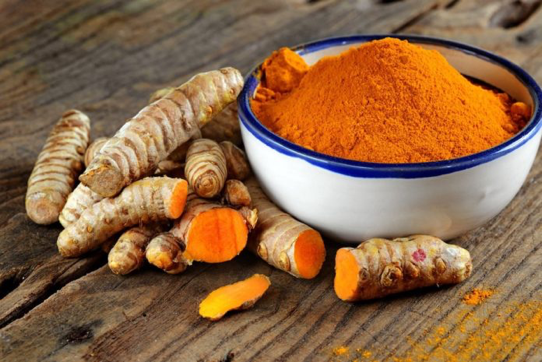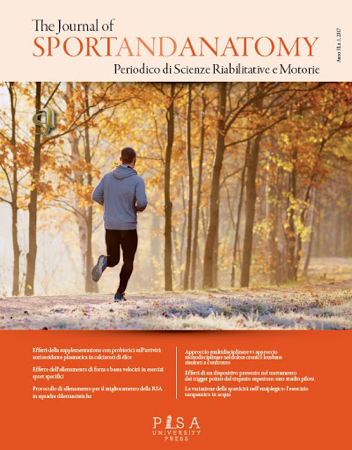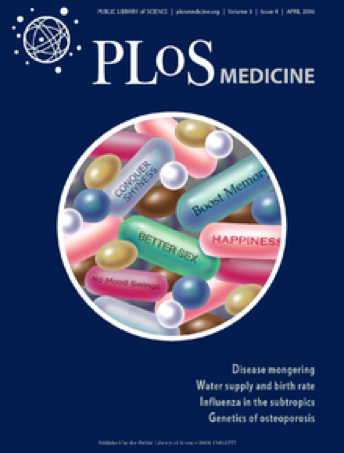Artrosi al ginocchio, meno dolore con l’estratto di curcuma in uno studio randomizzato Sabato 19 Settembre 2020

Negli anziani con dolore al ginocchio correlato all’osteoartrite l’estratto di Curcuma longa, comunemente noto come curcuma, ha performato meglio del placebo nel ridurre il dolore ma non ha avuto un impatto significativo sul versamento del ginocchio, sulla sinovite o sulla composizione della cartilagine. Sono i risultati di uno studio australiano pubblicato sulla rivista Annals of Internal Medicine.
Nonostante l’elevato onere della patologia, attualmente non sono disponibili farmaci modificanti la malattia approvati per il trattamento dell’osteoartrosi. I comuni trattamenti a base di paracetamolo e FANS hanno solo effetti lievi/moderati e sono associati a effetti collaterali. C’è quindi una necessità urgente di farmaci più sicuri ed efficaci per il trattamento di questa condizione.
«Le attuali opzioni farmacologiche per il trattamento dell’osteoartrosi sono solo moderatamente efficaci e sono controindicate nei pazienti con comorbidità, oltre a essere spesso associate a eventi avversi» ha dichiarato l’autore senior dello studio Benny Antony del Menzies Institute for Medical Research presso la the University of Tasmania a Hobart, Australia.
Curcuma efficace nel ridurre il dolore
I ricercatori hanno reclutato 70 pazienti di età pari o superiore a 40 anni con dolore al ginocchio con un valore di 40 mm o superiore su una scala analogica visiva (VAS) ed evidenza ecografica di versamento. I soggetti sono stati assegnati in modo casuale in un rapporto 1:1 a ricevere due capsule contenenti 1.000 mg di curcuma o placebo al giorno per 12 settimane.
Quanti sono stati trattati con curcuma hanno migliorato in misura significativa i punteggi VAS, con una riduzione media di 9,1 mm, e lo stesso per i punteggi relativi al dolore al ginocchio in base al Western Ontario and McMaster Universities Osteoarthritis Index (WOMAC) (-47,2 mm). Inoltre quattro pazienti nel gruppo curcuma hanno interrotto o ridotto il consumo di FANS e/o paracetamolo che stavano utilizzando prima dello studio.
La curcuma non ha tuttavia mostrato di influenzare gli aspetti strutturali dell’osteoartrosi del ginocchio, come il gonfiore articolare o la composizione della cartilagine valutate utilizzando la risonanza magnetica. Non sono infatti risultate significative le differenze nel volume del versamento (3,2 ml) e nel tempo di rilassamento della cartilagine femorale laterale (-0,4 millisecondi) tra i due gruppi.
Secondo quanto riportato dai ricercatori, 14 pazienti nella coorte Curcuma longa e 18 nella coorte placebo hanno riportato almeno un evento avverso durante lo studio, perlopiù di carattere gastrointestinale o muscolo-scheletrico. In due pazienti nel gruppo placebo sono stati segnalati eventi avversi gravi che non sono stati considerati correlati al trattamento.
Servono ulteriori studi
Sono necessari studi multicentrici con campioni di dimensioni maggiori e una lunga durata del follow-up per valutare il significato clinico dei risultati, ha affermato Romy Lauche, vicedirettore della ricerca presso il National Center for Naturopathic Medicine della Southern Cross University di East Lismore, NSW, Australia, non coinvolto nello studio.
The Journal of SPORTANDANATOMY

The Journal of SPORTANDANATOMY è un periodico trimestrale di scienze riabilitative e motorie rivolto a anatomisti, dietologi, fisiatri, fisioterapisti, laureati in scienze motorie, medici dello sport, neurologi, nutrizionisti, ortopedici, preparatori atletici, psicologi.
Contenuti e obiettivi sono:
- Traumatologia sportiva
- Prevenzione
- Preparazione Atletica
- Medicina dello Sport
- Cura
- Riatletizzaione
- Psicologia
- Allenamento
- Riabilitazione
Nell’ultimo decennio, la gestione, la preparazione atletica e la riabilitazione hanno assunto un ruolo sempre più importante nel percorso di un atleta. Nello sport moderno, per migliorare la prestazione e raggiungere importanti traguardi, è divenuto fondamentale il lavoro sinergico tra tecnici e professionisti in ambito sanitario. Riconoscendo la validità di questa sinergia, grazie ad alcuni docenti universitari e tecnici di vari sport, nasce SPORTANDANTOMY, un brand che sintetizza il legame tra il gesto sportivo e il distretto anatomico che lo permette, tra il movimento e il trauma, tra la conoscenza della struttura e la biomeccanica.
I temi d’interesse sono la traumatologia sportiva, la medicina dello sport, la riabilitazione, la preparazione atletica, la psicologia, tutte scienze che possono sembrare eterogenee tra loro, ma se correlate e sintetizzate diventano prevenzione, allenamento, cura, riatletizzazione, supporto psicologico. Oggi, l’enfasi per raggiungere un risultato è posta sempre di più sui dettagli anziché sull’insieme. Invece, la gestione dello sportivo ha bisogno di professionisti in grado di lavorare in equipe, confrontarsi, spiegare e pianificare metodi di lavoro, sempre aggiornati, per fornire all’atleta tutti gli strumenti per migliorare la propria prestazione.
The Journal of SPORTANDANTOMY nasce con queste convinzioni: la prestazione sportiva non si esaurisce con il solo gesto atletico, ma inizia molto prima e finisce molto dopo.

Tocilizumab may delay joint damage in JIA
The majority of patients with systemic juvenile idiopathic arthritis (sJIA) or polyarticular-course juvenile idiopathic arthritis (pcJIA) do not develop radiographic joint progression during the first 2 years of tocilizumab treatment, research shows.
Using standard radiographs of both wrists and hands in the posteroanterior view, collected during the TENDER and CHERISH randomized controlled trials, Angelo Ravelli (Università degli Studi di Genova, Genoa, Italy) and co-authors found that “[t]here was little change in radiographic scores of structural joint damage” over this period.
At baseline, the median adapted Sharp–van der Heijde (aSH) score among 47 of the 112 TENDER participants with sJIA was 24.6 points while the median Poznanski score, available for 33 participants, was −2.38 points.
At 1 year, there was no change from baseline in the median aSH score and a significant 0.29-point increase in Poznanski score; at 2 years, the aSH had increased by a nonsignificant 0.5 points from baseline, while the Poznanski score was a nonsignificant 0.16 points higher versus baseline.
Defining radiographic progression using the smallest detectable difference (SDD) of 23.6 points and 0.58 points for the aSH and Poznanski scores, respectively, the researchers calculated that, at 1 year, progression rates among the sJIA patients were 0.0% and 9.4%, respectively.At 2 years, the radiographic progression rates according to aSH and Poznanski scores had increased to a respective 5.4% and 11.5%. For the CHERISH participants with pcJIA, the median baseline aSH score was 8.0 points (n=45 of 188) and the median Poznanski score was –1.45 points (n=35 of 188) .
After 1 year of tocilizumab treatment, the median aSH and Poznanski scores had increased by a nonsignificant 0.5 points and 0.26 points, respectively. At 2 years, the aSH score had fallen by a nonsignificant 1.0 points versus baseline, while the Poznanski score had increased by a significant 0.55 points. The rates of aSH- and Poznanski-defined radiographic progression, based on SDDs of 9.76 and −0.88 points, respectively, were 12.5% and 6.5% at 1 year, and 2.9% and 4.0% at 2 years.
Ravelli and co-authors conclude in Arthritis Research & Therapy that, taken together, their findings “indicate that tocilizumab is potentially capable of halting the progression of radiographic joint damage in children with JIA.”
However, they add that “because the natural course of arthritis in children is heterogeneous and a control group not exposed to tocilizumab was not available, we cannot draw definitive conclusions regarding the ability of tocilizumab to halt or diminish radiographic progression in JIA, and our findings should be confirmed in future studies.”
Arthritis Res Ther 2020; 22: 211
Even low-dose glucocorticoids raise serious infection risk in RA patients
Among patients with rheumatoid arthritis (RA) receiving stable DMARD treatment, long-term glucocorticoid use is associated with a dose-dependent increase in the risk for serious infection, with a “small but significant” risk even at the lowest doses, researchers report.
Therefore, “clinicians should avoid long-term use of higher-dose glucocorticoids and should weigh the benefits of low-dose therapy in individual patients with these potential risks,” Michael George (University of Pennsylvania, Philadelphia, USA) and colleagues write in the Annals of Internal Medicine.
The study drew on two US claims databases, Medicare (representing publically insured patients aged 65 years and older) and Optum (representing commercially insured patients), to evaluate the risk for infection occurring during an acute care hospitalization over a total of 305,576 medication courses in 216,159 people with RA who were undergoing stable DMARD treatment. Approximately half of the medication courses included biologics or Janus kinase inhibitors.
In all, 47.1% of the 172,041 Medicare patients and 39.5% of the 44,118 Optum patients were taking glucocorticoids after 6 months of stable DMARD use, most commonly at a dose of 5 mg/day or lower.
George and team observed rising rates of hospitalized infection with increasing glucocorticoid doses in the Medicare cohort, at 8.4 per 100 person–years for those not taking the agents, and 13.5, 21.5, and 31.6 per 100 person–years for those taking low-dose (≤5 mg/day), medium-dose (>5–10 mg/day), and high-dose (>10 mg/day) glucocorticoids, respectively.
In a model adjusting for potentially confounding factors, people taking any dose of glucocorticoids had a significantly higher risk for hospitalized infection than those not taking glucocorticoids, with a hazard ratio (HR) of 1.29 for those in the low-dose group, 1.72 for those in the medium-dose group, and 2.16 for those in the high-dose group.
The researchers describe a similar pattern of results for the Optum cohort, with corresponding HRs of 1.32, 2.07, and 2.76.
“To put the observed risk into perspective, the risk for hospitalized infection associated with 5 mg or less of glucocorticoids per day was similar to the risk associated with biologic therapies in prior studies,” write the study authors. They note that this “may be helpful when counseling patients who require higher doses of glucocorticoids but who are hesitant to start a biologic treatment because of infection concerns.”
And the team concludes: “Our results support guideline recommendations to minimize the long-term use of glucocorticoids and attempt tapering, but the risks of low-dose glucocorticoids may be acceptable in patients who are obtaining substantial benefit and who have increased disease activity when attempts are made to taper.”
Ann Intern Med 2020;
SEPTEMBER 22, 2020

Is rheumatoid arthritis two different diseases?
While disease activity improves over time for most rheumatoid arthritis (RA) patients, long-term outcomes only improve in RA patients with autoantibodies, according to a new study published this week in PLOS Medicine by Xanthe Matthijssen of Leiden University Medical Center, Netherlands, and colleagues. The findings add to a growing body of evidence that RA with and without autoantibodies are two distinct conditions.
Rheumatoid arthritis is the most common type of autoimmune arthritis, caused when the immune system attacks healthy cells in the linings of joints. Over the last decade it has become clear that there are differences in RA patients with and without RA-associated autoantibodies detectable in their blood. In the new study, researchers followed 1,285 RA patients between 1993 and 2016 through the Leiden Early Arthritis Clinic cohort. Data on patients’ symptoms, treatments, autoantibody status, disability and mortality was collected annually.
In total, 823 patients had autoantibody-positive RA and 462 patients had autoantibody-negative RA. In both groups, disease activity decreased significantly over time. Sustained drug-free remission rates increased, as a new treat-to-target treatment strategy became common in 2006 to 2010, in patients with autoantibody-positive, but not autoantibody-negative, RA. Moreover, mortality and functional disability rates decreased with treat-to-target adjustments only in autoantibody-positive patients.
“The disconnection between improvement in disease activity and subsequent improvement in long-term outcomes in RA without autoantibodies suggests that the underlying pathogenesis of RA with and without autoantibodies is different,” the authors say. “We propose that it is time to formally divide RA into type 1, with autoantibodies, and type 2, without autoantibodies, in the hope that it leads to stratified treatment in autoantibody-positive and autoantibody-negative RA.”
Dr. Matthijssen notes “In the last decennia research in RA has largely focused on the autoantibody-positive subset. More research on autoantibody-negative RA is urgently needed to identify methods to also improve their long-term outcomes.”

